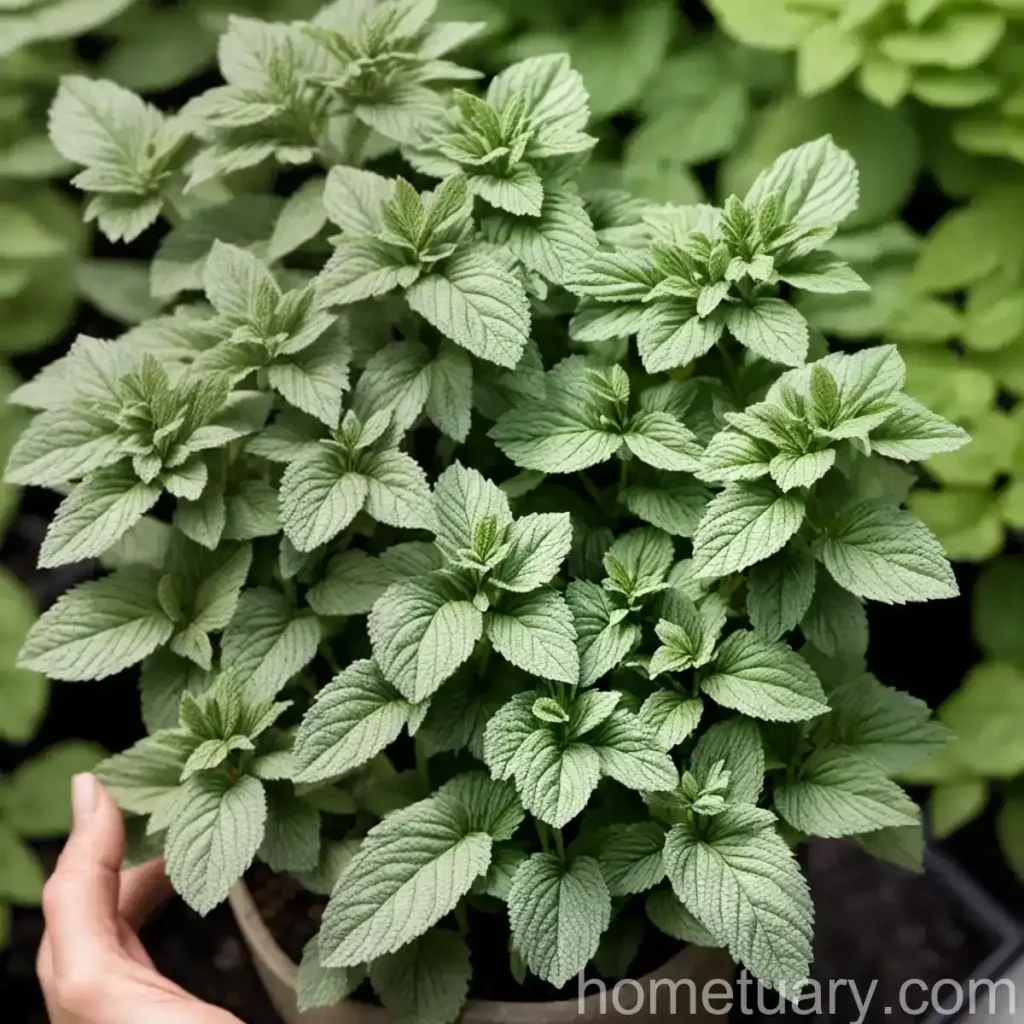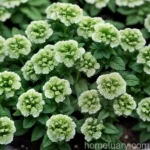The Fascinating World of spearmint (Mentha spicata ‘Kentucky Colonel’)
Plants play a significant role in our lives, from providing us with food and oxygen to serving as sources of medicine and enrichment. Among the diverse range of plants, one particular species stands out for its unique and refreshing qualities – spearmint. In this blog post, we will delve into the captivating world of spearmint, focusing on the specific variety ‘Kentucky Colonel’ (Mentha spicata ‘Kentucky Colonel’). We will explore its cultural significance, uses, growth requirements, benefits, and more, offering valuable insight for both plant enthusiasts and those interested in herbal remedies.
What is plant: spearmint (Mentha spicata ‘Kentucky Colonel’)
Spearmint, scientifically known as Mentha spicata, is a perennial herb that belongs to the Lamiaceae family. ‘Kentucky Colonel’ is a specific cultivar of spearmint, revered for its exceptional fragrance, taste, and numerous applications. The plant is characterized by its highly aromatic, serrated leaves and slender spikes of small, lilac, or white flowers.
Key Takeaways – spearmint (Mentha spicata ‘Kentucky Colonel’)
- Scientific Name: Mentha spicata ‘Kentucky Colonel’
- Common Name: Spearmint
- Family: Lamiaceae
- Cultivar: ‘Kentucky Colonel’
- Uses: Culinary, Medicinal, Aromatic
- Growth Habit: Perennial Herb
- Sunlight: Partial to Full Sun
- Watering: Regular, Moist Soil
- Soil Type: Well-draining, Rich
- Pruning: Regular to Control Spread
- Propagation: Division, Cuttings
- Common Diseases: Rust, Powdery Mildew
- Common Pests: Aphids, Spider Mites
- Companion Plants: Cabbage, Tomato, Pepper
- Fragrance: Refreshing, Minty
- Popularly used in: Tea, Cocktails, Herbal Remedies, Culinary Dishes
Now, let’s delve deeper into the various aspects of spearmint, focusing on its culture, uses, and essential care practices.
Culture
Water
Spearmint, including the ‘Kentucky Colonel’ variety, thrives in consistently moist soil. Adequate watering is essential, particularly during hot and dry periods. However, it is equally crucial to avoid waterlogging, as excessive moisture can lead to root rot and other detrimental conditions. The frequency of watering will vary depending on environmental factors, such as temperature and humidity, with the general recommendation being to keep the soil moderately damp.
Sunlight
When it comes to sunlight requirements, spearmint displays a preference for partial to full sun exposure. In regions with intense heat, providing some afternoon shade can be beneficial, helping to protect the plant from potential scorching. Adequate sunlight is essential for promoting robust growth and enhancing the development of the plant’s signature aroma and flavor.
Fertilizer
To support healthy growth and abundant foliage, it is advisable to fertilize spearmint plants during the growing season. A balanced, water-soluble fertilizer applied every 4-6 weeks can provide the necessary nutrients for vigorous and aromatic growth. When selecting a fertilizer, opt for one with balanced nitrogen, phosphorus, and potassium levels, promoting overall plant health and flavor concentration.
Soil
The ideal soil for spearmint, including the ‘Kentucky Colonel’ variety, is well-draining and rich in organic matter. A loamy soil type is often preferred, offering a blend of sand, silt, and clay that ensures proper drainage while retaining essential moisture and nutrients. Prior to planting, amending the soil with compost or well-rotted manure can augment its fertility, creating an optimal environment for spearmint to thrive.
Pruning
Regular pruning is a valuable practice when cultivating spearmint, as it helps to prevent the plant from becoming invasive and promotes a bushier growth habit. By removing straggly stems and spent flowers, the plant’s energy is directed toward producing fresh leaves and shoots, resulting in a more abundant harvest. Additionally, pruning can help to maintain the overall health and vigor of the plant, contributing to its longevity and productivity.
Uses
Culinary
In the culinary world, spearmint is cherished for its refreshing and aromatic qualities, lending a delightful flavor to various dishes and beverages. From savory recipes to delectable desserts, the bright and minty essence of spearmint can elevate an array of culinary creations. ‘Kentucky Colonel’ spearmint, in particular, is esteemed for its exceptional flavor profile, making it a sought-after choice for culinary applications. The leaves can be minced and added to salads, used as a garnish, or infused into syrups and sauces to impart a burst of minty freshness.
Medicinal
Spearmint has a long-standing history as a medicinal herb, celebrated for its diverse health benefits and therapeutic properties. From promoting digestion and alleviating nausea to easing respiratory discomfort, spearmint offers a host of potential remedies. With its calming and soothing attributes, spearmint is commonly employed in herbal teas, tinctures, and essential oils, providing natural support for overall wellness. The ‘Kentucky Colonel’ variety presents a compelling option for those seeking to harness the plant’s medicinal potential, offering a potent source of minty goodness.
Aromatic
The invigorating scent of spearmint makes it a prized addition to aromatic applications, ranging from potpourri and sachets to scented oils and candles. Its fresh and minty fragrance can revitalize the senses, creating a welcoming and uplifting ambiance. ‘Kentucky Colonel’ spearmint, with its robust aroma and abundant foliage, is well-suited for aromatic endeavors, serving as a captivating source of natural freshness and vitality.
Propagation
Propagating spearmint, including the ‘Kentucky Colonel’ variety, can be achieved through multiple methods, each offering its own advantages and considerations.
Division
Dividing established spearmint plants is a straightforward and effective means of propagation. This method involves separating the plant into smaller sections, each with its own roots and shoots, which can then be replanted to establish new growth. Division is ideally performed in the early spring when the plant is beginning to emerge from dormancy, facilitating the successful establishment of the divided segments.
Cuttings
Using stem cuttings to propagate spearmint is a reliable approach that allows for the creation of genetically identical offspring. Selecting healthy stems and rooting them in a suitable growing medium can yield new plants with the desirable traits of the parent specimen. By providing adequate moisture and warmth, the cuttings will develop roots and transition into independent plants, ready to thrive in their new environment.
Container Popularity
The versatility and adaptability of spearmint make it a popular choice for container gardening enthusiasts. Cultivating ‘Kentucky Colonel’ spearmint in containers offers several advantages, including the ability to control its growth, provide optimal growing conditions, and conveniently harvest its leaves for culinary and aromatic purposes. When selecting a container for spearmint, opt for a spacious and well-draining vessel that accommodates the plant’s expansive root system and provides ample room for growth.
Common Diseases
Rust
Rust, caused by various fungal pathogens, can manifest as yellowish-orange pustules on the undersides of spearmint leaves. This common disease can lead to the defoliation and decline of the plant if left unaddressed. To manage rust, it is advisable to promptly remove and dispose of affected plant parts, avoid overhead watering, and provide adequate air circulation to mitigate moisture buildup.
Powdery Mildew
Powdery mildew, characterized by a white, powdery growth on the surfaces of leaves, stems, and flowers, is another prevalent issue for spearmint plants. This fungal disease thrives in warm and dry conditions, often appearing during periods of high humidity. To address powdery mildew, employing cultural practices such as proper spacing, pruning, and ensuring good air circulation can help minimize the risk of infection.
Disease Diagnosis
Diagnosing plant diseases is a crucial aspect of effective plant care, as it enables timely intervention and remediation. When observing spearmint plants, it is important to pay attention to any unusual discoloration, spots, or abnormalities on the leaves, stems, or flowers. Additionally, monitoring changes in growth, such as stunted development or wilting, can provide valuable indications of potential health issues. By recognizing and accurately identifying symptoms, plant diseases can be diagnosed and addressed proactively, minimizing their impact on the overall well-being of the plant.
Common Pests
Aphids
Aphids are small, sap-sucking insects that can infest spearmint plants, causing damage to the foliage and potentially transmitting viral diseases. These pests can be identified by their pear-shaped bodies and a range of colors, including green, black, and yellow. To manage aphids, introducing beneficial insects, such as ladybugs or lacewings, can help control their populations naturally. Additionally, gently spraying the plants with water or employing insecticidal soap can effectively deter aphids and reduce their numbers.
Spider Mites
Spider mites are another common nuisance for spearmint, particularly in warm and dry conditions. These tiny arachnids feed on plant sap, causing stippling, webbing, and overall decline in the affected foliage. Mitigating spider mite infestations involves increasing humidity, regular misting, and using horticultural oils to smother and disrupt their life cycle. By maintaining a healthy growing environment and promptly addressing pest issues, the impact of spider mites can be minimized.
Botanist’s Tips
Optimal Care
Providing spearmint plants with optimal care is essential for ensuring their health and productivity. This includes adhering to proper watering practices, maintaining suitable sunlight exposure, and incorporating regular fertilization to support robust growth. By fostering favorable growing conditions, the plants can thrive and manifest their aromatic and culinary potential to the fullest.
Vigilant Monitoring
Regular monitoring of spearmint plants is vital for detecting any signs of disease or pest activity early on. By inspecting the foliage, stems, and growing environment, potential issues can be identified promptly, allowing for timely intervention and mitigating the impact on the plants’ well-being.
Sustainable Harvesting
When harvesting spearmint leaves, employing sustainable practices is paramount to ensure the continued vitality of the plant. Avoid overharvesting, as this can stress the plant and diminish its growth and vigor. Instead, selectively gather leaves from various stems, allowing the plant to regenerate and continue producing fresh foliage.
Fun Facts
- Spearmint has been cultivated for thousands of years and holds rich historical significance, being valued by ancient civilizations for its aromatic and medicinal properties.
- The refreshing taste of spearmint has made it a popular choice for gums, candies, and oral care products, contributing to its widespread recognition and consumption.
- Spearmint belongs to the same genus as peppermint (Mentha × piperita) and shares several characteristics with its renowned relative, including invigorating fragrance and culinary appeal.
- The essential oil derived from spearmint is prized for its uplifting and soothing properties, often used in aromatherapy and personal care products.
Links to External Resources
For further information and resources on spearmint cultivation, uses, and related topics, take a look at the following links:
- Spearmint Benefits and Uses – Explore the diverse benefits and versatile uses of spearmint in culinary, medicinal, and aromatic applications.
- Kentucky Colonel Spearmint Cultivation Guide – Discover comprehensive guidance on cultivating ‘Kentucky Colonel’ spearmint, including care tips and best practices for optimal growth.
- Spearmint Varieties and Propagation Techniques – Learn about different spearmint varieties and explore effective propagation techniques to expand your plant collection.
- Mentha spicata in Herbal Medicine – Gain insights into the traditional and contemporary uses of Mentha spicata in herbal medicine and holistic wellness practices.
- Growing Kentucky Colonel Spearmint in Containers – Dive into container gardening techniques and advice for successfully growing ‘Kentucky Colonel’ spearmint in pots and planters.
The world of spearmint encompasses a rich tapestry of culinary delights, aromatic indulgence, and natural remedies, offering a wealth of benefits and enjoyable experiences for plant enthusiasts and aficionados of herbal treasures. By embracing the cultivation and utilization of ‘Kentucky Colonel’ spearmint, individuals can partake in the timeless tradition of harnessing the bountiful gifts of nature, enhancing their lives with the invigorating essence of this remarkable herb.















